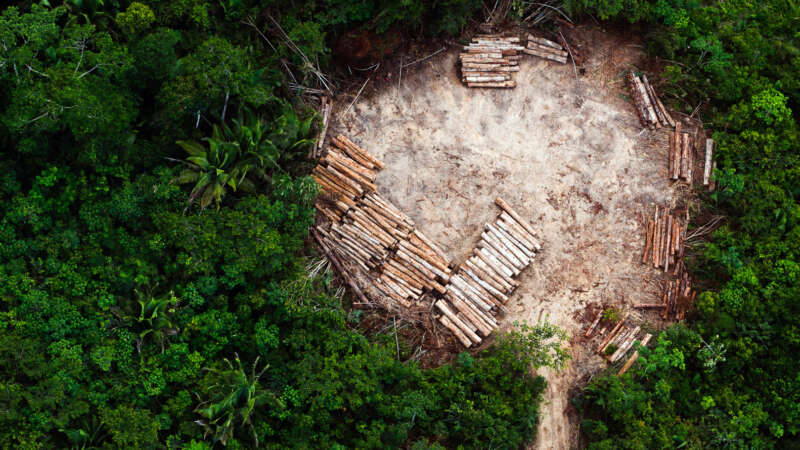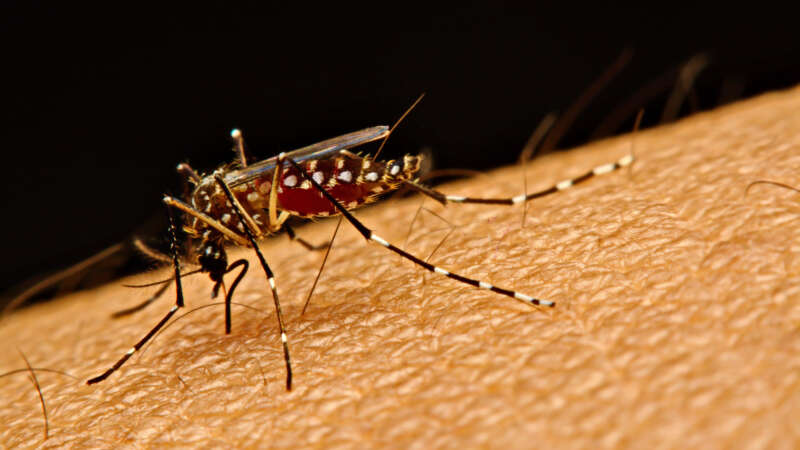yellow fever
Deforestation 101
Forests cover about 30% of the planet, but deforestation is clearing these essential habitats on a massive scale. What is deforestation? Find out the causes, effects, and solutions to deforestation.
Deforestation’s Hidden Toll: Amplifying Disease Risk Worldwide
In the last couple of decades, the lush rainforest around the remote village of Meliandou in the heart of Guinea has become patchier. Animals, like bats, saw their habitats dwindle and in a quest for survival, they sought refuge in closer proximity to human environments, making the boundaries between species thinner. A hollowed-out tree in the middle of the village became home to a colony of bats.
About 50 meters from the same tree, in the heart of Meliandou, a two-year-old boy named Emile lived with his family. In a matter of days, Emile fell ill with an unknown virus, developed a high fever, and died. Soon the same virus, that scientists now believe Emile got from the bats, took the lives of his sister, mother, and grandmother. The village, surrounded by a ring of forest, unexpectedly became the epicenter of a devastating outbreak that would leave an indelible mark.
Aedes aegypti: Beyond the Black and White
One look at Aedes aegypti gives an immediate impression of its menacing nature. The telltale dark and white bands on the mosquito’s legs and other body parts bring a sense of foreboding and hardship. Sleek, silent, and stealthy, Ae. aegypti is the primary vector for several important, debilitating, and sometimes fatal human diseases including dengue, Zika virus, yellow fever, and chikungunya. The species is cause for mounting concern on many levels, as its biology, behavior, and ability to adapt have made Aedes aegypti one of the most pervasive and daunting public health challenges in the modern world.
The first mosquito ever associated with the spread of disease, Ae. aegypti is also the most studied of all mosquito species.1 From its humble beginnings in the African wild to a footprint that spans the globe, this durable and opportunistic insect has become a formidable opponent of vector control efforts worldwide.
Tracking the Global Burden of Vector-Borne Disease
The burden of vector-borne diseases (VBDs) is one of public health’s most pressing challenges. VBDs are caused by pathogens such as arboviruses (arthropod-borne virus), bacteria, and parasites that are transmitted to humans and animals through the bites of infected arthropods including mosquitoes, ticks, sandflies, and fleas, among others. According to the World Health Organization (WHO) , “vector-borne diseases account for more than 17% of all infectious diseases, causing more than 700,000 deaths annually worldwide”.
Beyond these broad statistics, attempts to quantify the global burden of VBDs is extremely challenging – for a number of reasons. At the highest level, even “burden” has an underlying complexity in public health terms: burden may refer to the number of cases of a given disease as well as the number of deaths.
Burden can also represent Disability-adjusted Life Years (DALYs), a measure that accounts for the long-term effects of disability among the afflicted, as well as the economic impact of disease from regions and countries all the way down to households and individuals. These economic impacts can be further scrutinized as reduced productivity among the populace, increased healthcare costs, and negative impacts on tourism; all of which can directly affect the GDP and economic growth of local and regional economies. And that’s just the beginning.
The Neglected Public Health Threat of Chagas Disease
The term “vector-borne disease” usually brings to mind a familiar list of names: malaria, West Nile virus, dengue, chikungunya, onchocerciasis, yellow fever. But there’s another …
An Integrated Operations Approach to Managing Zika Virus Vectors
The current Zika virus outbreak in the Americas offers a stark reminder of how urbanization and ease of travel can magnify exposure to container mosquitoes …


